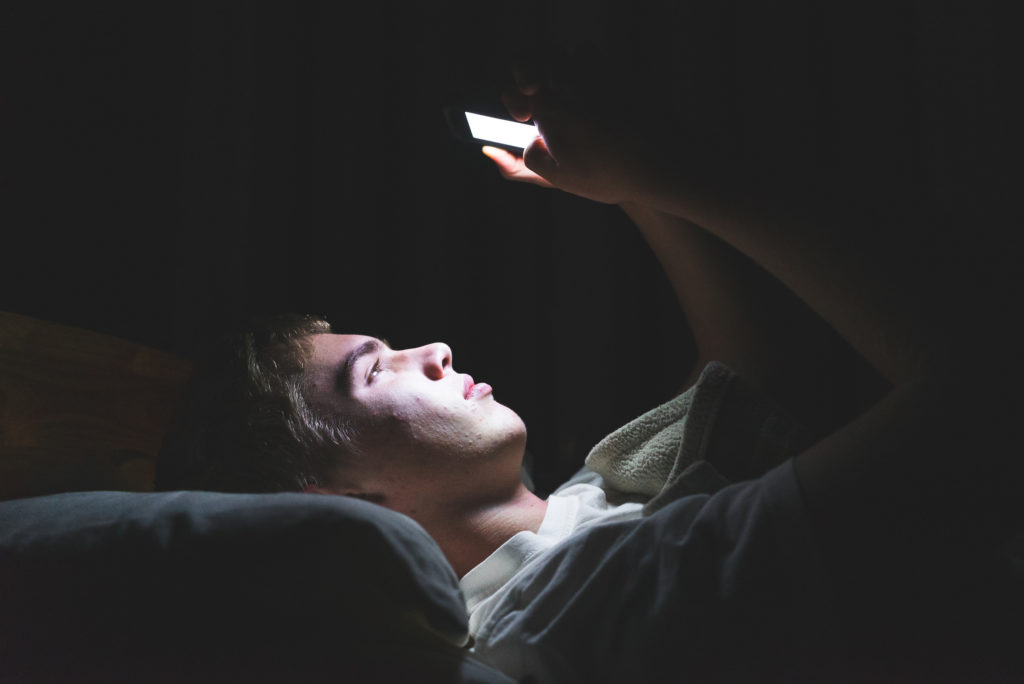Some of us are old enough to remember when phones were mounted on kitchen walls or sat on end tables in the living room. Now, of course, they’re everywhere. We use them as movie studious, virtual wallets, personal assistants, heart monitors, and a million other things you can think of, or a million other things you haven’t thought of yet. Today they’re unavoidable. Everywhere you go you see people looking down at their hand-held mini-screens. It’s almost as if they’re addicted. Even if you’re reluctant to admit you have a problem, with as much time as people spend on their devices, before you know it, you’ve spent half the day checking your timeline.
A study published in the Journal of Psychiatric Research, titled, Time distortion associated with smartphone addiction: Identifying smartphone addiction via a mobile application (App)., looks at exactly this issue. (By the way, the irony of studying smartphone addiction using a mobile app is not lost on this writer). The authors of the study noticed that people reported looking at their phones a lot less than the app tracking their use recorded them actually using their devices. This tendency to under-report seem to suggest that phone addiction is a real thing. Similar to a person who may have had a few too many at a bar insisting he, “only had a couple.”
It probably doesn’t take reading through scientific studies for the average person to see that we’re on our cellphones way too much. So much so, that it’s even become a safety concern. The National Highway Traffic Safety Administration reported 3,450 fatalities resulting from cell phone related distracted driving in 2016 alone. There’s no doubt that looking at your newsfeed while driving is incredibly dangerous, yet it happens every day. But, even if you put your phone away when you get behind the wheel, your phone habits even when you’re not in the car could be affecting your driving.
Consider another symptom of our increasingly busy modern lives – drowsy driving. It might be much harder to track than smartphone related crashes, but the government statistics on traffic accidents caused by tired drivers are no less concerning. Based on police statistics, 2015 saw over 72,000 car crashes attributed to drowsy driving.
Drowsy driving is a lot more common than you might think. Consider the average work day in America. According to the Centers for Disease Control and Prevention’s (CDC), at least a third of Americans are getting less than at least 7 hours of sleep a night. For people getting less than that, say 6 hours per night, that means they are up for at least 18 hours a day. This may not seem too concerning to some, however studies have shown that being awake for 18 hours straight has the same effect on a person as having a blood alcohol content of .05%, just shy of the legal limit for driving in most states. The bottom line is, if you get behind the wheel without a good night’s rest, much like enjoying too many cocktails, you risk having delayed reaction time, difficulty with decision making, and you can have trouble just paying attention.
Much of the blame for this growing exhaustion seems to be linked to us looking at our phones at night. With most people checking their phones before bed, there seems to be a quiet, lack of sleep epidemic growing in this country. Research has shown that the light from our screens is not only keeping us from getting enough sleep, but also keeping us from getting enough quality sleep to be able to be rested and alert the next day. The type of light emitted by these electronic devices not only disrupts our ability to fall asleep, it also delays our circadian clock, keeping our bodies from resting and repairing themselves, and it decreases melatonin production, our body’s sleep-promoting hormone.
It’s not just our driving that affected by lack of sleep. Sleep deprivation can lead to cognitive deficiencies like memory loss and difficulty thinking clearly. There are plenty of health risks associated drowsiness as well, including increased risk of heart disease, high blood pressure, stroke, and diabetes.
So, what do we do to lower these adverse health risks and get more rest? There are a few life hacks that can get you back on track to a normal sleep schedule. It may sound simple, but try putting your phone away more often. At least one hour before going to bed, put your phone in a drawer. If you don’t want to turn it off in case you get an emergency call in the middle of the night, set your phone on “do not disturb” and designate certain numbers, like your spouse or your closest relatives to ring regardless of those settings. If you have trouble falling asleep, try reading a book with a traditional book light. If you prefer e-readers to physical books, get one that doesn’t light up and use the book light. These light tones don’t disrupt your sleep rhythms the way phones do. Limiting screen time allows your body to relax and naturally get ready for bed. Then, you can wake up the next morning refreshed and alert, and ready to navigate traffic. Hopefully, you’ll feel better and avoid becoming a statistic.

Reader Interactions